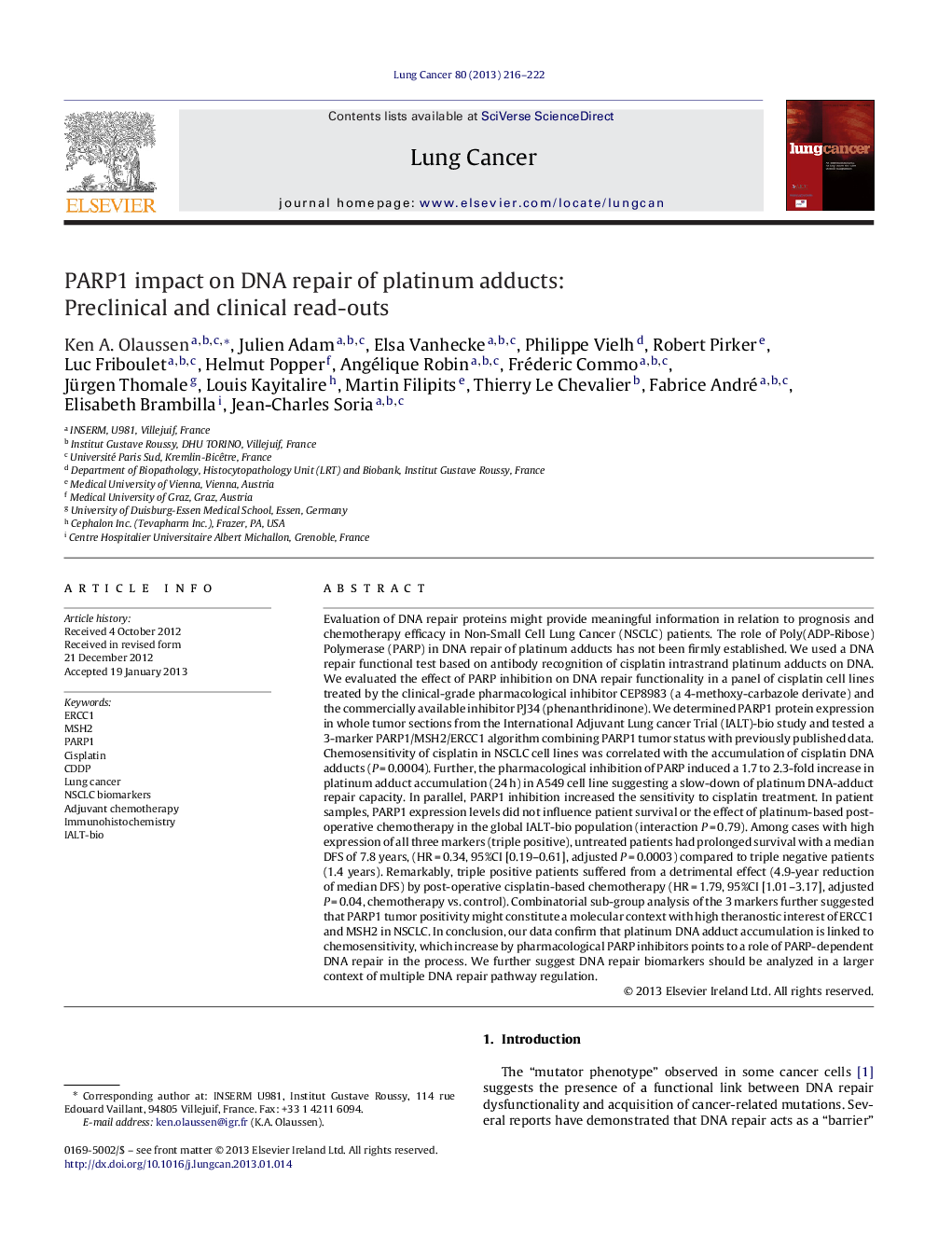| کد مقاله | کد نشریه | سال انتشار | مقاله انگلیسی | نسخه تمام متن |
|---|---|---|---|---|
| 2141320 | 1088283 | 2013 | 7 صفحه PDF | دانلود رایگان |

Evaluation of DNA repair proteins might provide meaningful information in relation to prognosis and chemotherapy efficacy in Non-Small Cell Lung Cancer (NSCLC) patients. The role of Poly(ADP-Ribose) Polymerase (PARP) in DNA repair of platinum adducts has not been firmly established. We used a DNA repair functional test based on antibody recognition of cisplatin intrastrand platinum adducts on DNA. We evaluated the effect of PARP inhibition on DNA repair functionality in a panel of cisplatin cell lines treated by the clinical-grade pharmacological inhibitor CEP8983 (a 4-methoxy-carbazole derivate) and the commercially available inhibitor PJ34 (phenanthridinone). We determined PARP1 protein expression in whole tumor sections from the International Adjuvant Lung cancer Trial (IALT)-bio study and tested a 3-marker PARP1/MSH2/ERCC1 algorithm combining PARP1 tumor status with previously published data. Chemosensitivity of cisplatin in NSCLC cell lines was correlated with the accumulation of cisplatin DNA adducts (P = 0.0004). Further, the pharmacological inhibition of PARP induced a 1.7 to 2.3-fold increase in platinum adduct accumulation (24 h) in A549 cell line suggesting a slow-down of platinum DNA-adduct repair capacity. In parallel, PARP1 inhibition increased the sensitivity to cisplatin treatment. In patient samples, PARP1 expression levels did not influence patient survival or the effect of platinum-based post-operative chemotherapy in the global IALT-bio population (interaction P = 0.79). Among cases with high expression of all three markers (triple positive), untreated patients had prolonged survival with a median DFS of 7.8 years, (HR = 0.34, 95%CI [0.19–0.61], adjusted P = 0.0003) compared to triple negative patients (1.4 years). Remarkably, triple positive patients suffered from a detrimental effect (4.9-year reduction of median DFS) by post-operative cisplatin-based chemotherapy (HR = 1.79, 95%CI [1.01–3.17], adjusted P = 0.04, chemotherapy vs. control). Combinatorial sub-group analysis of the 3 markers further suggested that PARP1 tumor positivity might constitute a molecular context with high theranostic interest of ERCC1 and MSH2 in NSCLC. In conclusion, our data confirm that platinum DNA adduct accumulation is linked to chemosensitivity, which increase by pharmacological PARP inhibitors points to a role of PARP-dependent DNA repair in the process. We further suggest DNA repair biomarkers should be analyzed in a larger context of multiple DNA repair pathway regulation.
Journal: Lung Cancer - Volume 80, Issue 2, May 2013, Pages 216–222